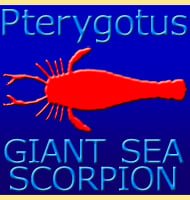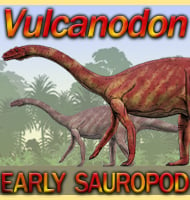In Depth
Despite its long history and broad geographic range, Simolestes surprisingly remains a little known pliosaur, certainly no way near as famous as the often over exaggerated Liopleurodon. Simolestes does not have the best fossil representation, but comparison to other pliosaurs has yielded estimates of up to six meters long for the living animal. This would make Simolestes large for the Jurassic pliosaurs, with most larger forms like Kronosaurus being known from the Cretaceous (that said the pliosaur dubbed ‘Predator X’ now reclassified as Pliosaurus funkei lived at the end of the Jurassic and was probably even bigger than Kronosaurus).
Simolestes is known to have enlarged teeth that grew towards the end of its jaws. In the first fossils these teeth point out to the sides, but this is generally considered to be a product of the fossilisation process (remember that sedimentary rocks which fossils are known from are formed by intense weight and pressure of the above layers pushing down on the lower layers). As such the teeth in the living Simolestes actually pointed up and down with some of the larger teeth actually pointing clear of the opposite jaw. This meant that all of the teeth intermeshed together when the jaws were closed which is seen as a specialisation for small and possibly slippery prey like fish and soft bodied cephalopods like squid. In fact the latter may have been the preferred prey type as squid hooklets (small hooks on the tentacles of some squid that help them hold onto their prey) have been found in association with Simolestes remains.
Further Reading
– On some new Plesiosauria from the Oxford Clay of Peterborough – Annals And Magazine of Natural History 4:418-429 – C. W. Andrews – 1909. – Simolestes keileni sp. nov., un Pliosaure (Plesiosauria, Reptilia) du Bajocien sup�rieur de Lorraine (France) – Bulletin des Acad�mie et Soci�t� Lorraines des sciences 33(2):77-95 – P. Godefroit – 1994. – A large Rhomaleosaurid Pliosaur from the Upper Lias of Rutland – Mercian Geologist 2000 15 (1) – Richard Forrest.









